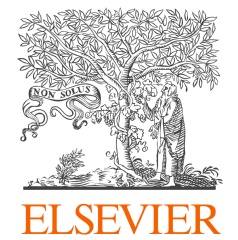Journal of Dairy Science® presents collection on calf health and management
Six new USDA studies in the October issue of JDS focus on preweaned heifer calves
The United States Department of Agriculture-National Animal Health Monitoring System (USDA-NAHMS) conducted a survey of 2,545 preweaned heifer calves across 104 dairy operations in 2014. The study, which took place in 13 states over 18 months, covered a large cross-section of management of preweaned heifer calves in the United States, and the results have been published in six new articles in the October issue of the Journal of Dairy Science.
“Results from the study contain the latest information on the health and management of preweaned heifer calves in the United States. The information in these publications will help to improve the health and well-being of preweaned dairy heifer calves,” said Jason Lombard, DVM, of USDA-Animal and Plant Health Inspection Service-(APHIS)-Veterinary Services (VS) Center for Epidemiology and Animal Health, NAHMS, Fort Collins, CO, USA.
Management of preweaned dairy calves is complex, and many factors play a role in the success of practices at the farm level. Rearing heifer calves is also an expensive endeavor, at approximately $5.50 per calf per day. Therefore, research to maximize the efficiency of raising replacement heifers and minimize losses due to morbidity and mortality is extremely important. Because the industry is continually changing, however, having current information on management practices throughout the United States is a necessity. As such, these six studies from the USDA-NAHMS represent an important collection to reflect the current state of the dairy industry.
The articles included in the October issue of the Journal of Dairy Science include survey results on descriptive characteristics of preweaned heifer raising practices, colostrum quality and passive transfer status, Cryptosporidium and Giardia infections, the presence of Escherichia coli, morbidity and mortality, as well as average daily gain. These studies provide dairy producers with a wealth of information to help them improve their calf-rearing practices in terms of outcomes and efficiency. The authors hope that the results may also be used to guide education programs and improve overall calf health.
Notes for editors
The articles are “Preweaned heifer management on US dairy operations: Part I. Descriptive characteristics of preweaned heifer characteristics” (https://doi.org/10.3168/jds.2017-14010); “Part II. Factors associated with colostrum quality and passive transfer status of dairy heifer calves” (https://doi.org/10.3168/jds.2017-14008); “Part III. Factors associated with Cryptosporidium and Giardia in preweaned dairy heifer calves” (https://doi.org/10.3168/jds.2017-14060); “Part IV. Factors associated with the presence of Escherichia coli O157 in preweaned dairy heifers” (https://doi.org/10.3168/jds.2018-14659); “Part V. Factors associated with morbidity and mortality in preweaned dairy heifer calves” (https://doi.org/10.3168/jds.2017-14019); and “Part VI. Factors associated with average daily gain in preweaned dairy heifer calves” (https://doi.org/10.3168/jds.2017-14022). They will appear in the Journal of Dairy Science, volume 101, issue 10 (October 2018) published by FASS Inc. and Elsevier. These articles are openly available from September 20 – October 20, 2018 at the links above.
About the Journal of Dairy Science
The Journal of Dairy Science (JDS), official journal of the American Dairy Science Association®, is co-published by Elsevier and FASS Inc. for the American Dairy Science Association. It is the leading general dairy research journal in the world. JDS readers represent education, industry, and government agencies in more than 70 countries, with interests in biochemistry, breeding, economics, engineering, environment, food science, genetics, microbiology, nutrition, pathology, physiology, processing, public health, quality assurance, and sanitation. JDS has a 5-year Impact Factor of 3.085 according to the 2017 Journal Citation Reports®, published by Clarivate Analytics (2018). www.journalofdairyscience.org
About the American Dairy Science Association (ADSA)
The American Dairy Science Association (ADSA) is an international organization of educators, scientists, and industry representatives who are committed to advancing the dairy industry and keenly aware of the vital role the dairy sciences play in fulfilling the economic, nutritive, and health requirements of the world’s population. It provides leadership in scientific and technical support to sustain and grow the global dairy industry through generation, dissemination, and exchange of information and services. Together, ADSA members have discovered new methods and technologies that have revolutionized the dairy industry. www.adsa.org
About Elsevier
Elsevier is a global information analytics business that helps institutions and professionals advance healthcare, open science and improve performance for the benefit of humanity. Elsevier provides digital solutions and tools in the areas of strategic research management, R&D performance, clinical decision support and professional education, including ScienceDirect, Scopus, SciVal, ClinicalKey and Sherpath. Elsevier publishes over 2,500 digitized journals, including The Lancet and Cell, more than 38,000 e-book titles and many iconic reference works, including Gray’s Anatomy. Elsevier is part of RELX Group, a global provider of information and analytics for professionals and business customers across industries. www.elsevier.com
( Press Release Image: https://photos.webwire.com/prmedia/7/229050/229050-1.png )
WebWireID229050
This news content was configured by WebWire editorial staff. Linking is permitted.
News Release Distribution and Press Release Distribution Services Provided by WebWire.
